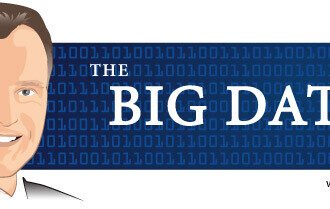By: Greta Roberts, Conference Chair, Predictive Analytics World for Workforce 2016
By: Greta Roberts, Conference Chair, Predictive Analytics World for Workforce 2016
In anticipation of her upcoming Predictive Analytics World for Workforce conference presentation, Employee Attrition in the Knowledge Economy – The Value lies in the Details, we interviewed Geetanjali Gamel, Predictive Analytics Leader, Global HR at  MasterCard. View the Q-and-A below to see how Geetanjali has incorporated predictive analytics into the workforce of MasterCard. Also, glimpse what’s in store for the new PAW Workforce conference.
MasterCard. View the Q-and-A below to see how Geetanjali has incorporated predictive analytics into the workforce of MasterCard. Also, glimpse what’s in store for the new PAW Workforce conference.
Q: How is a specific line of business / business unit using your predictive decisions? How is your product deployed into operations?
A: We are doing work to understand and predict employee attrition risk through various lenses. Insights derived from analyzing risk by key talent segments are more likely to be top-of-mind and actionable. There is interest in using this analysis to provide the business with enhanced workforce intelligence around emerging trends in talent flight risk.
Q: If HR were 100% ready and the data were available, what would your boldest data science creations do?
A: Great question! A powerful recommender engine that leverages internal and external employee data on skillsets, experience, personality, interests, working-style and engagement to double up as a dynamic career pathing tool for individuals, and team builder for managers. It could be a multi-purpose solution for career development and internal talent pipeline building. Also the same data could be harnessed for talent assessment during acquisitions.
Q: When do you think businesses will be ready for “black box” workforce predictive methods, such as Random Forests or Neural Networks?
A: As the value of investing in predictive workforce analytics begins to be more widely known and proven with tangible results, the appetite for complex techniques, including such “black box” methods, will grow.
Q: Do you have suggestions for data scientists trying to explain the complexity of their work, to those solving workforce challenges?
A: Think about who your audience is and what matters most to them. Complex and novel methods may excite data scientists, but almost everyone else wants to know “So, what do I do with this now?” and “What value does this create?”
If the ask is for strategic solutions, focus on explaining how your analysis fits in with the big picture and impacts overall results for the business. If the ask is tactical, translate your work in terms of how someone could use it in their everyday functions.
Q: What is one specific way in which predictive analytics actively is driving decisions?
A: Employee attrition is one area in which businesses are leveraging predictive analytics.
Q: How does business culture, including HR, need to evolve to accept the full promise of predictive workforce.
A: Predictive workforce analytics is still in early stages of development at many companies. From both the business and HR side, it will take patience and commitment to realize the value of investing in this critical initiative. People analytics teams will have to collaborate with HR and business customers to develop a greater level of comfort among them in using data-driven insights to make better decisions.
———————–
Don’t miss Geetanjali’s conference presentation, Employee Attrition in the Knowledge Economy – The Value lies in the Details, at PAW Workforce, on Tuesday, April 5, 2016, from 3:30 to 4:15 pm. Click here to register for attendance.
By: Greta Roberts, CEO, Talent Analytics, Corp. @gretaroberts and Conference Chair of Predictive Analytics World for Workforce.
The post Wise Practitioner – Predictive Workforce Analytics Interview Series: Geetanjali Gamel from MasterCard appeared first on Analytical Worlds Blog – Predictive Analytics and Text Analytics – by Eric Siegel, Ph.D..








